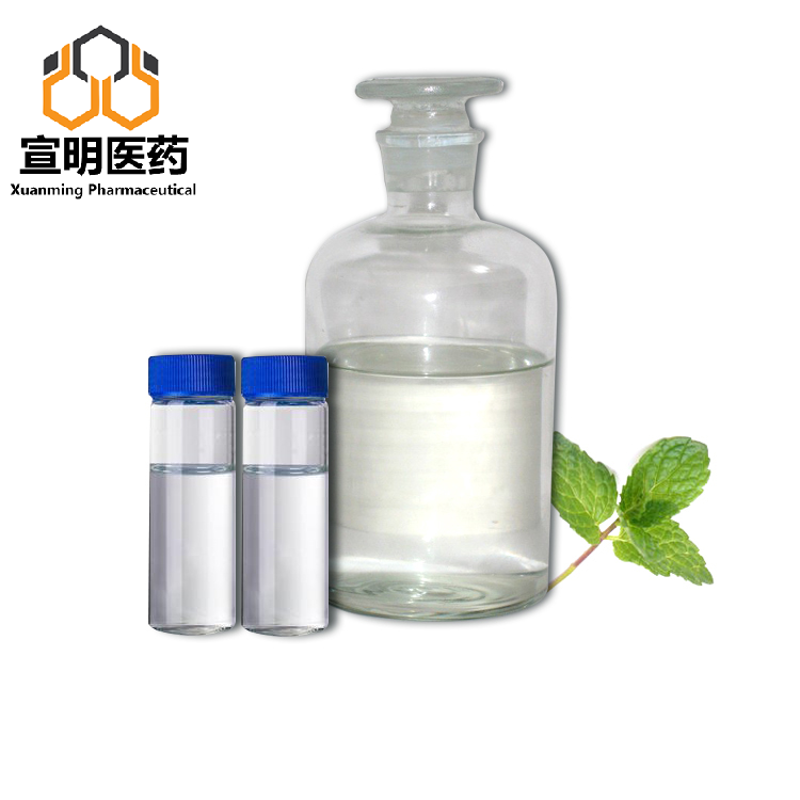-
Categories
-
Pharmaceutical Intermediates
-
Active Pharmaceutical Ingredients
-
Food Additives
- Industrial Coatings
- Agrochemicals
- Dyes and Pigments
- Surfactant
- Flavors and Fragrances
- Chemical Reagents
- Catalyst and Auxiliary
- Natural Products
- Inorganic Chemistry
-
Organic Chemistry
-
Biochemical Engineering
- Analytical Chemistry
-
Cosmetic Ingredient
- Water Treatment Chemical
-
Pharmaceutical Intermediates
Promotion
ECHEMI Mall
Wholesale
Weekly Price
Exhibition
News
-
Trade Service
| Chinese scholars propose innovative treatment plans for Chinese liver cancer patients |
Professor Shi Ming's team from Sun Yat-sen University Cancer Center proposed a hepatic artery infusion chemotherapy (FOLFOX-HAIC) with fluorouracil, calcium leucovorin and oxaliplatin regimens for the treatment of large liver cancer.
Its phase III study significantly improved the prognosis of patients with unresectable large liver cancer
.
Related research was recently published online in the journal "Clinical Oncology"
Significantly improve the prognosis of patients with unresectable large liver cancer
Significantly improve the prognosis of patients with unresectable large liver cancer According to data released by the World Health Organization (WHO) in 2020, the number of liver cancer cases in China accounted for 45.
3% of the world, and the number of deaths accounted for 47.
1% of the world
.
Due to the insidious onset of liver cancer, Chinese liver cancer patients often have large tumors when they are first diagnosed and are accompanied by offspring, and most of them cannot undergo radical resection
Transarterial chemoembolization (TACE) is currently the preferred treatment for unresectable hepatocellular carcinoma, but its efficacy is largely affected by tumor size
.
For patients with tumors larger than 7cm, the efficacy of transarterial chemoembolization is not yet satisfactory, and the survival time of patients is generally only about 1 year
In recent years, Chinese scholars have proposed hepatic arterial infusion chemotherapy (FOLFOX-HAIC) with fluorouracil, leucovorin and oxaliplatin regimens for the treatment of large liver cancer
.
In 2017, Shi Ming’s team initially revealed the safety and effectiveness of FOLFOX-HAIC in the treatment of large liver cancer in a phase II study
"This is a randomized, multi-center, open-label study.
The enrolled patients were unresectable hepatocellular carcinoma with no vascular invasion or extrahepatic metastasis, and the maximum tumor diameter was ≥7 cm.
The patients were randomly assigned 1:1 and received FOLFOX-HAIC (n=159) or TACE (n=156) treatment
.
” Shi Ming said that the main study endpoint is overall survival
The results showed that FOLFOX-HAIC significantly improved the prognosis of patients with unresectable large liver cancer and reduced adverse reactions.
Compared with the TACE group, the FOLFOX-HAIC group had a higher tumor objective response rate (RECIST 1.
1 standard: 46% vs 18 %; P <0.
001), the median progression-free survival is longer (9.
6 vs 5.
4 months, P <0.
001), and more patients undergo successful conversion resection (24% vs 12%; P = 0.
002)
.
The median overall survival in the FOLFOX-HAIC group was 23.
Hope to rewrite liver cancer treatment guidelines
Hope to rewrite liver cancer treatment guidelines "FOLFOX-HAIC was initiated by local Chinese scholars and promoted to the world.
It is expected to rewrite the guidelines for liver cancer treatment
.
" Shi Ming told the China Science News that in recent years, scholars from many hospitals across the country have also been involved in patients with advanced liver cancer.
In this study, the survival time of patients receiving FOLFOX-HAIC treatment was prolonged to about 2 years.
About half of the patients' tumors were significantly reduced, and about 1/4 of the patients received radical surgery after their tumors were reduced, which is expected to completely cure liver cancer.
Long-term survival
.
The research fully demonstrates that the treatment of liver cancer proposed by Chinese researchers has been internationally affirmed.
Chinese scholars continue to introduce new treatments for liver cancer, and they have played an important role in the field of international tumor research, and further optimized the comprehensive treatment of liver cancer for China, Asia-Pacific and other regions of the world.
Provide valuable evidence-based medicine data
.
"HAIC is suitable for patients with large tumors, rich hepatic artery blood supply and good liver function
.
" Shi Ming said that both HAIC and TACE are interventional treatments for liver cancer, which are minimally invasive, highly reproducible, less side effects, and short in hospital stay.
Related paper information: https://doi.
org/10.
1200/JCO.
21.
00608
org/10.
1200/JCO.
21.
00608







